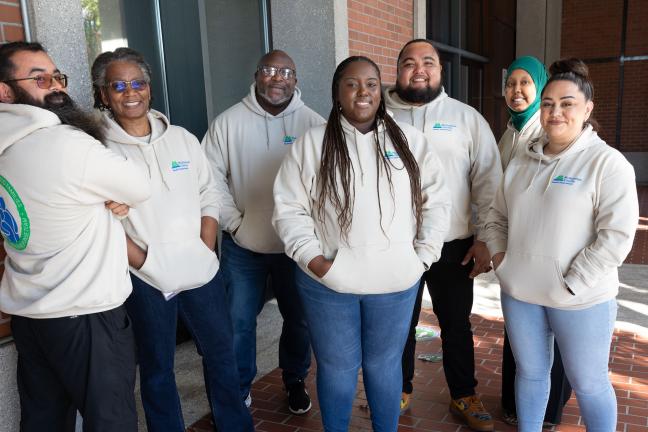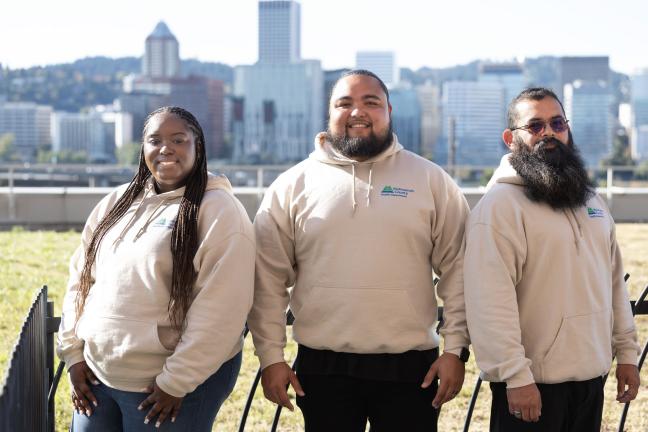As a licensed clinical social worker for the last 20 years — including eight at a Portland high school — Caroline Bleckmann has seen firsthand, almost daily, the impacts of the youth mental health crises.
During most of her time at the high school, about a hundred students may come into her office annually, typically with a high level of need among them and their families. Stress, anxiety, bullying and reports of violence were not uncommon.
“Even before the pandemic, some youth I was working with had grown-up problems: severe stressors, lack of access to basic needs and trauma,” said Bleckmann. “Outside stressors would affect their mental health.”
But once COVID-19 turned the world upside-down, these issues exploded.
“Most children and teenagers, I would say, were struggling. We were filled with students with varying levels of mental health needs and a system that wasn’t able to accommodate it,” she said.
Bleckmann assists students and families in myriad ways. She often advocates with school staff on behalf of her students, communicates with teachers, helps students and their families access food and clothes, and links them to other services responsive to their needs and experiences.
One of those services is the Multnomah County Behavioral Health Division’s Gun Violence Impacted Families Behavioral Health Response Team (GVIFBHRT).
"I simply don't know what our school team would have done without them in the past year," said Bleckmann. "There have been more needs than we have ever seen and such scarce resources, so this program was a bright spot in a very dark time, and we're still working through it."
The groundwork for the County program was laid in 2021 as the pandemic-caused disruption to schools and routines lingered on, coinciding with a surge in gun and community violence across both Portland and the rest of the country. GVIFBHRT connects people aged 10 to 25 who have been impacted by gun violence with a specialized team consisting of mental health clinicians who offer easily accessible, trauma-informed and home-based services. The team works to:
- Connect youth to mental health services
- Improve family dynamics to create healthier and more meaningful connections
- Increase the community’s use of healthy coping mechanisms
- Raise awareness of how cyclical trauma affects the community
- Increase prosocial community engagement and
- Improve academic achievement
There are no stringent requirements for participation.
The program started taking clients in 2022, wrapping its resources around high-needs families, providing support at the pace and in the ways each household needs and requests, according to Jerome Sloan, the program’s supervisor.
Through GVIFBHRT, mental health consultants visit families in their homes and even go directly to the schools to build relationships.
“Our mental health consultants go above and beyond to reach out to the families,” Sloan said. “Each consultant holds a caseload of 15 to 20 clients.”
At least five high-profile shootings have impacted schools and their surrounding neighborhoods since the beginning of 2022. In the aftermath of gun violence, the team meets bright and early to assess capacity and come up with a game plan to aid families and communities in deep distress, said Sloan.
"We intentionally build relationships," he said. "We don't rush the therapeutic process. We look at resources within our program and seek connections with external partners.” That can even include relocation programs or assistance with housing.
The program is designed to be culturally responsive, working with African immigrant, African American and Latine/x/o communities to address causes rooted in trauma and racism.
"As a white, cis, straight woman, it's reasonable (for families of color) to have a healthy suspicion of me until proven otherwise," Bleckmann acknowledged. "The families we've worked with have specific and complicated needs, and even if I could find an opening in a standard outpatient program, it may not be able to respond adequately. Many of those families have been traumatized by those systems.
“So, having a responsive program (like GVIFBHRT) that gets it and is always available and willing to meet youth in the community and be flexible about when and where those meetings are, that's just invaluable."
The team receives referrals from six partner school districts, the Multnomah Education Service District, the County's Juvenile Services Division, and partner organizations like POIC + Rosemary Anderson High School and Latino Network.
"There are people who don't want to go to the office," Y'Kirshia Davis, a GVIFBHRT mental health consultant, explained. "Being somewhere that makes the client feel comfortable overall and allows you into their space, you really see the person for who they are, and you are able to build a better rapport with the client."
Recalling a parent who approached him at an event hosted by Latino Network to ask about eligibility for the program, another GVIFBHRT mental health consultant, Adolfo Jimenez, said that when “the community sees and hears individuals like us as someone that can relate with them and know how we function, it bridges the gap of a resource that they didn't know existed.”
Whatever the barrier may be, GVIFBHRT breaks it down.
“I have a client who would see me but not want to fully engage, but with continued work with their parents during the whole summer, that helped the client flourish,” Jimenez said.
Preliminary data from Portland Police show that there were 56 homicides from Jan. 1 to Oct. 10, 2023. That overlaps considerably with the time period of Sept. 30, 2022 to Sept. 30, 2023, for which preliminary numbers show 1,104 shooting incidents. However, the data also showed a recent 30-day stretch from late August through September 2023 that had no homicides — a promising development. Still, those closest to the trauma of these experiences of violence are cautious and continue to mourn the lives that have been lost. Work still remains.
While students have by and large returned to school, some of the negative symptoms and behaviors that emerged during the height of the pandemic and community violence are still manifesting, said Scott Williams, a program manager for GVIFBHRT.
“We see there’s a lot of anxiety, depression, post-traumatic stress disorder as it relates to gun violence and the impacts.”
At one school that the program was called out to, staff even heard accounts of young children afraid to walk to school, he said.
The team acknowledges the importance of collaboration and communication across many systems to stem gun violence, from schools and public safety partners to public health agencies and community-based organizations.
“We are making it a priority to understand, communicate and collaborate with all our partners' efforts so we can achieve optimal outcomes,” said Williams.
Bleckmann is particularly grateful for the way the Gun Violence Impacted Families Behavioral Health Response Team has reached across silos and locations to make a difference in the lives of her students, calling their collaboration a “pleasure.”
“Without their care coordination and the wraparound approach, as a school social worker, I would have felt so much more at a loss.”
#####


